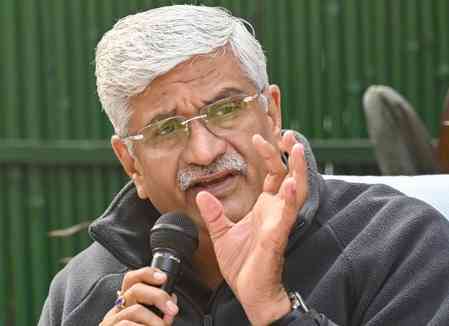Indian businesses highly optimistic about transporting freight via rail in Q1 2022 compared to last year – Dun & Bradstreet study
Indian study finds that 66% of respondents transport less than 25% of their goods via railways

Mumbai, March 29, 2022: Dun & Bradstreet, a leading global provider of business decisioning data and analytics, has released its inaugural all-India survey, Railway Freight Activity Optimism Index (RFAOI), in collaboration with Jupiter Group, a premier manufacturer of railway wagons, passenger coaches, wagon components and castings.
The RFAOI survey was conducted to measure the optimism levels of rail freight users (industry players and logistics service providers), to assess whether rail freight activity in India is expected to improve, remain steady or decline. The index is composed of 14 sub-parameters across four sub-indices - optimism around supply chain, operational efficiency, investment and demand.
Key findings
The Railway Freight Activity Optimism Index (RFAOI) for Q1 2022 stands at 60. The optimism index for demand was the lowest of the four sub-indices, siting at just five points above the neutral index point of 50. This can be attributed to the expected slowdown in economic activity and international supply chain challenges weighing upon the sentiment of companies importing goods.
The survey further highlights that businesses in the western region are the most optimistic regarding rail freight activity for Q1 2022, and that small businesses have indicated greater optimism (60) than the medium sized businesses (57). Large businesses are more optimistic about domestic activities, whereas medium sized companies are the least optimistic about domestic activities.
Avinash Gupta, Managing Director & CEO - India, Dun & Bradstreet said: “Freight activity is expected to increase over the coming years, as India steps up to achieve its goal of becoming a US$5 trillion economy. To cater to the growing demand for freight, the shift in the modal share of transport from roads to railways has become more critical than ever.”
Dr. Arun Singh, Global Chief Economist, Dun & Bradstreet said: “The Railway Freight Activity Optimism Index (RFAOI) is unique as it aims to capture the optimism level of rail freight users, and will serve as important input in supply chain planning for service providers, supply side industries and government.”
Vivek Lohia, Director, Jupiter Wagons said: “When we track the role of railways from the logistics supply side, it is pertinent to understand the pulse of the market, measuring the optimism levels of railway freight users about using railways to transport freight, and how various developments are facilitating the shift from roadways to railways.”
Key findings of the four sub-indices of RFAOI
Optimism around factors of supply
• Companies are more optimistic about the supply chain scenario in terms of availability of wagons, labour and connectivity, with the optimism for factors of supply at 63
• Optimism amongst businesses about availability of wagons (64) and connectivity (64) i.e., frequency of availability of rakes on existing and new routes, has upped the optimism for supply
Optimism around operational efficiency
• The optimism index for operational efficiency stands at 61
• The optimism level with respect to loading and unloading of goods in Q1 2022 is the highest of the sub-indices, at 65
Optimism around investment activity
• The optimism index for investment activity stood at 60
• User industries and service providers have indicated conditions for loading and unloading of wagons are expected to improve both in terms of investment and also with respect to operational efficiency as highlighted in the previous section
Optimism around demand
• The optimism for demand sub-index was the lowest of the four sub-indices. The index is only fi¬ve percentage points above the neutral level of 50
• The survey shows that rail transport demand for import freight would remain weak in Q1 2022, and is the lowest optimism level of all the indices
• Domestic trade is expected to gain more traction compared to external trade in Q1 2022


 cityairnews
cityairnews 











